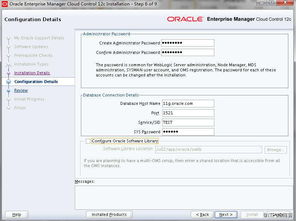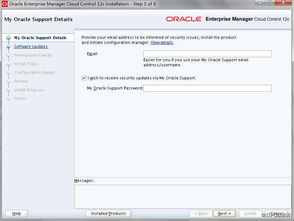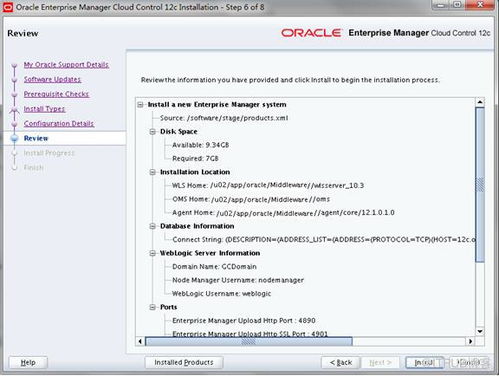
Oracle OMS: A Comprehensive Guide
Oracle Management Service (OMS) is a crucial component of Oracle Enterprise Manager (OEM), a powerful tool for managing Oracle environments. As an essential part of the Oracle ecosystem, OMS plays a pivotal role in ensuring the smooth operation of your databases and applications. In this detailed guide, we will explore the various aspects of Oracle OMS, helping you understand its significance and how it can enhance your database management experience.
Understanding Oracle OMS

Oracle OMS is a server-side component of Oracle Enterprise Manager that collects, manages, and reports on monitoring data. It serves as the central hub for data exchange within the Oracle Grid Control environment, facilitating efficient and secure data sharing among different components.
OMS is responsible for several key functions, including:
| Function | Description |
|---|---|
| Data Collection | OMS collects performance metrics, configuration data, and other relevant information from various sources within the Oracle environment. |
| Data Management | OMS stores and organizes the collected data, making it easily accessible for analysis and reporting. |
| Reporting | OMS generates reports and alerts based on the collected data, providing insights into the performance and health of your Oracle systems. |
| Integration | OMS integrates with other Oracle products and third-party applications, enabling a unified management experience. |
Key Features of Oracle OMS

Oracle OMS offers a wide range of features that make it an invaluable tool for database administrators (DBAs) and IT professionals. Here are some of the key features of OMS:
- Centralized Management: OMS provides a single interface for managing multiple Oracle databases and applications, simplifying the management process.
- Performance Monitoring: OMS collects and analyzes performance metrics, helping you identify bottlenecks and optimize your systems.
- Proactive Alerting: OMS generates alerts based on predefined thresholds, enabling you to take proactive measures to prevent potential issues.
- Automation: OMS supports automation of various tasks, such as backups, patches, and performance tuning, reducing manual effort and improving efficiency.
- Customization: OMS allows you to customize the monitoring and reporting capabilities to suit your specific requirements.
Setting Up Oracle OMS

Setting up Oracle OMS involves several steps, including installing the necessary software, configuring the environment, and deploying the OMS components. Here’s a brief overview of the process:
- Install the Oracle Management Agent (OMA): The OMA is responsible for collecting data from your Oracle systems. Install the OMA on each target system and configure it to communicate with the OMS.
- Install the Oracle Management Repository (OMR): The OMR stores the monitoring data and configuration information. Install the OMR on a dedicated server and configure it to work with the OMS.
- Install the Oracle Management Service (OMS): The OMS is the central component that collects, manages, and reports on monitoring data. Install the OMS on a server with sufficient resources and configure it to work with the OMA and OMR.
- Configure the Oracle Management Service Console (OMS Console): The OMS Console provides a user-friendly interface for managing and monitoring your Oracle systems. Install the OMS Console on a client machine and configure it to connect to the OMS.
Benefits of Using Oracle OMS
Using Oracle OMS offers several benefits, including:
- Improved Efficiency: OMS automates various tasks, reducing manual effort and improving efficiency.
- Enhanced Performance: OMS provides insights into the performance of your Oracle systems, enabling you to optimize and improve their performance.
- Reduced Risk: OMS helps you identify and address potential issues before they impact your business operations.




